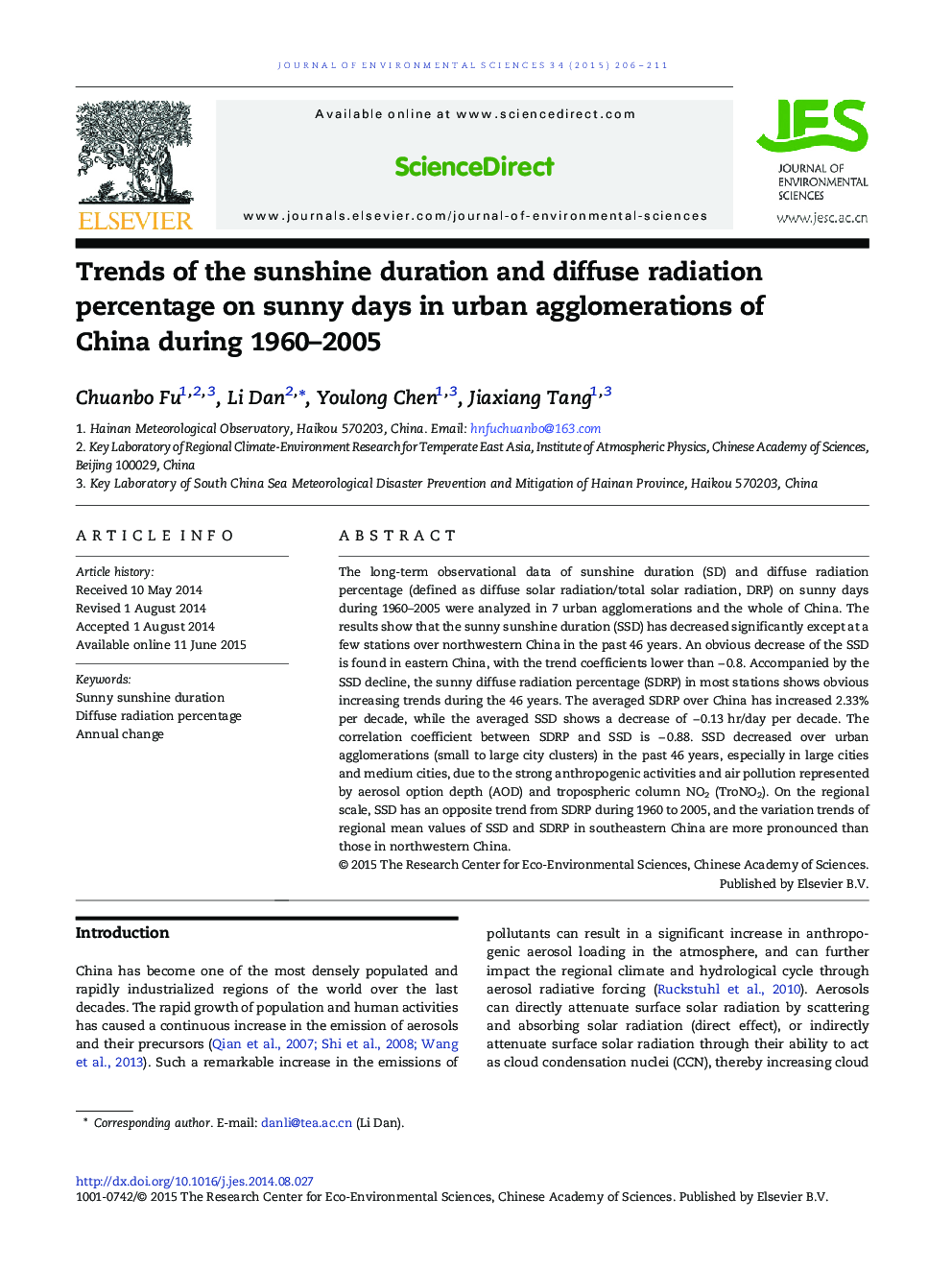| Article ID | Journal | Published Year | Pages | File Type |
|---|---|---|---|---|
| 4454028 | Journal of Environmental Sciences | 2015 | 6 Pages |
The long-term observational data of sunshine duration (SD) and diffuse radiation percentage (defined as diffuse solar radiation/total solar radiation, DRP) on sunny days during 1960–2005 were analyzed in 7 urban agglomerations and the whole of China. The results show that the sunny sunshine duration (SSD) has decreased significantly except at a few stations over northwestern China in the past 46 years. An obvious decrease of the SSD is found in eastern China, with the trend coefficients lower than − 0.8. Accompanied by the SSD decline, the sunny diffuse radiation percentage (SDRP) in most stations shows obvious increasing trends during the 46 years. The averaged SDRP over China has increased 2.33% per decade, while the averaged SSD shows a decrease of − 0.13 hr/day per decade. The correlation coefficient between SDRP and SSD is − 0.88. SSD decreased over urban agglomerations (small to large city clusters) in the past 46 years, especially in large cities and medium cities, due to the strong anthropogenic activities and air pollution represented by aerosol option depth (AOD) and tropospheric column NO2 (TroNO2). On the regional scale, SSD has an opposite trend from SDRP during 1960 to 2005, and the variation trends of regional mean values of SSD and SDRP in southeastern China are more pronounced than those in northwestern China.
Graphical abstractInterannual change of regional mean SSD anomaly and SDRP anomaly over China.Note: SSD for sunny sunshine duration; SDRP for sunny diffuse solar radiation/sunny total solar radiation. Seven regions include Northeast China (NE), North China (NC), Northwest China (NW), Central China (CC), East China (EC), Southwest China (SW) and South China (SC).Figure optionsDownload full-size imageDownload as PowerPoint slide
